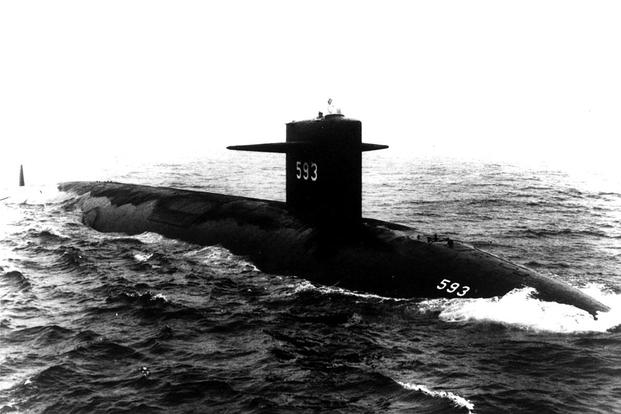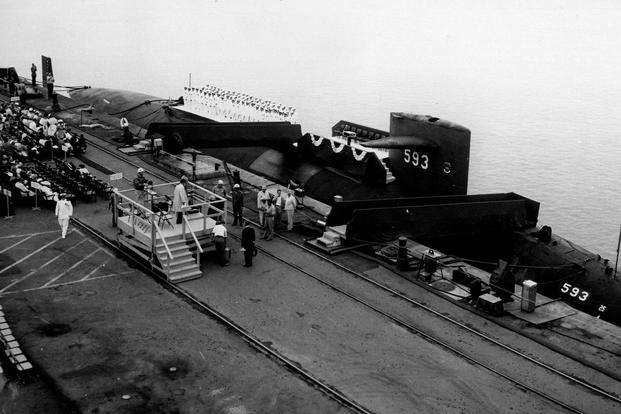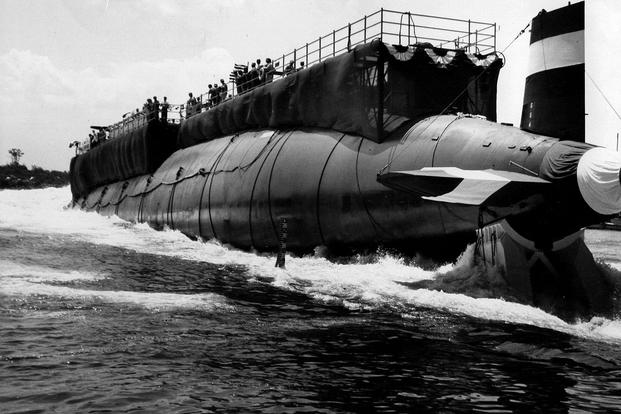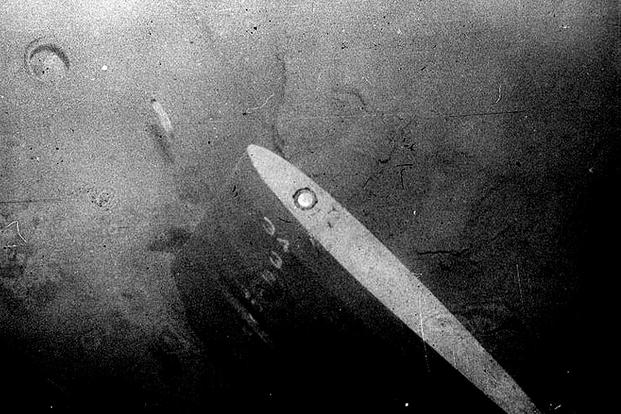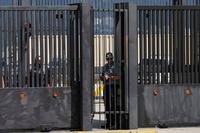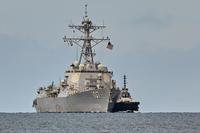Marty Callaghan is a news editor for Military.com.
The worst submarine disaster in U.S. Navy history happened on the morning of April 10, 1963, when the nuclear-powered USS Thresher (SSN 593) was lost with 129 crew members and civilian employees on board.
A Naval Court of Inquiry (NCOI) convened to investigate the disaster concluded the probable cause of the Thresher's loss was "major flooding" -- a finding that has since been challenged by naval and submarine experts. After more than a half-century, all but 18 pages of testimony from key witnesses remains closed to the public.
Retired Navy Capt. Jim Bryant, who served on board three Thresher-class subs and commanded the USS Guardfish (SSN 612), recently authored a new analysis of the submarine disaster, highlighting discrepancies between the NCOI's findings and evidence available for its investigation at the time. He raises concerns about the court's accuracy in recording the last understandable message sent by the sub, at about 9:12 a.m., pieced together from the testimony of several witnesses:
"Experiencing minor difficulties. Have positive up angle. Am attempting to blow. Will keep you informed."
In his analysis, Bryant said, "Thresher's difficulties were anything but minor by the time Skylark received that message."
The USS Skylark (ASR 20) was the submarine rescue ship that accompanied the Thresher for its sea trials about 200 miles off the Massachusetts coast.
Bryant's paper, excerpted and paraphrased below, faults the Navy for not being forthcoming enough regarding the historic disaster.
"The NCOI report cannot be accepted verbatim. It is not an acceptable reference for defining the sequence of events that occurred as the Thresher lost control and sank," Bryant said in his analysis.
"The boat was below test depth of about 1,300 feet and its nuclear reactor had just shut down. The Thresher had negative buoyancy and there was no power to drive it back to the surface," he continued.
The Thresher tried to blow its main ballast tanks with no effect. According to Bryant, it would take the crew at least another 20 minutes to restore main propulsion -- time they did not have.
The Thresher kept sinking until its hull imploded at a depth of about 2,400 feet, releasing energy equivalent to the explosive force of about 22,000 pounds of TNT. The hull collapsed in 47 milliseconds, about one-twentieth of a second.
The Thresher's crushed and shattered hull was later found just off the Continental Shelf, at a depth of more than 8,000 feet.
Bryant said the Thresher's final descent and implosion was recorded on paper time-frequency plots in great detail by the Navy's underwater Sound Surveillance System (SOSUS).
"All of the data recorded by SOSUS was available to the Naval Court of Inquiry," he said. "But it wasn't used effectively because the court didn't trust it. If the NCOI had thoroughly understood the acoustic data, it could have ruled out major flooding as a cause of the disaster, since the resonances created by such an event were not detected."
Bryant said the court did hear the testimony (in closed session) of a single acoustics expert: Navy Lt. Bruce Rule, analysis officer for the SOSUS Evaluation Center in Norfolk, Va. He went on to become the lead acoustic analyst for the Office of Naval Intelligence.
Rule analyzed the acoustic data from the Thresher during its final dive. Not only did he discount a major flooding incident, Bryant said, he indicated that the sub's nuclear power plant shut down completely at a critical moment -- from an electrical failure -- when all the main coolant pumps stopped.
Rule said the NCOI softened its conclusion by stating that the Thresher’s main coolant pumps "slowed or stopped," a phrase that would deflect blame from Adm. Hyman G. Rickover, who created the Navy’s nuclear propulsion program.
"In fact, I was aggressively confronted by a couple of Navy commanders who challenged my data," Rule said. "I don't recall their names, but I do remember their vicious -- and unsuccessful -- attempt to get me to change my testimony."
Because the court of inquiry didn't trust the SOSUS data, Bryant said, it relied heavily on the Skylark's underwater telephone communications log and testimony from crew members in defining the tragic sequence of events.
The NCOI interviewed many witnesses about underwater communications with the Thresher during its final dive, he said. Yet the Navy has released only a small portion of that testimony since 1963.
"We have no way of comparing the original words from witnesses with the language of the NCOI's final report on the Thresher's loss," Bryant wrote.
As far as Bryant is concerned, it is time for the Navy to release all remaining documents related to the Thresher disaster.
"The entire NCOI report, especially all of the testimony, should be made available to scholars and the public at large," he wrote. "That report is sitting in a federal records center, waiting for more than a decade to be transferred to the National Archives."
In other words, he argues the Navy should comply with the spirit of Executive Order 13526, issued in December 2009. It created the National Declassification Center to facilitate the timely and systematic release of classified material.
Bryant said that even a small gesture, such as releasing the unclassified Sea Trial Agenda, would demonstrate a concern for transparency and provide greater insight for historians.
"To date," he said, "formal requests for Thresher's Sea Trial Agenda have been repeatedly and systematically deferred by the Navy."
For more information, see "Thresher Disaster: New Analysis" by Capt. Jim Bryant, USN (ret.), a research paper currently under review for publication by the Naval Engineers Journal. A 3,000-word article based on this paper is tentatively scheduled for publication in U.S. Naval Institute Proceedings magazine.
-- The opinions expressed in this op-ed are those of the author and do not necessarily reflect the views of Military.com. If you would like to submit your own commentary, please send your article to opinions@military.com for consideration.
